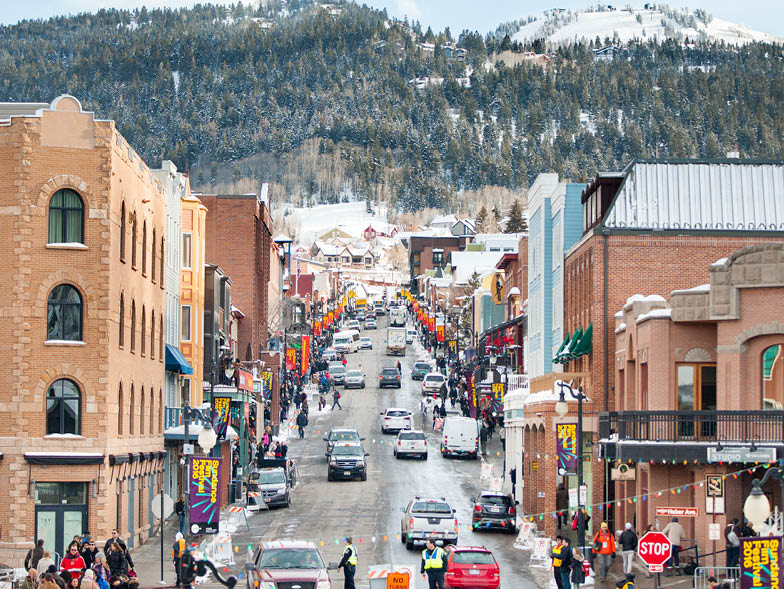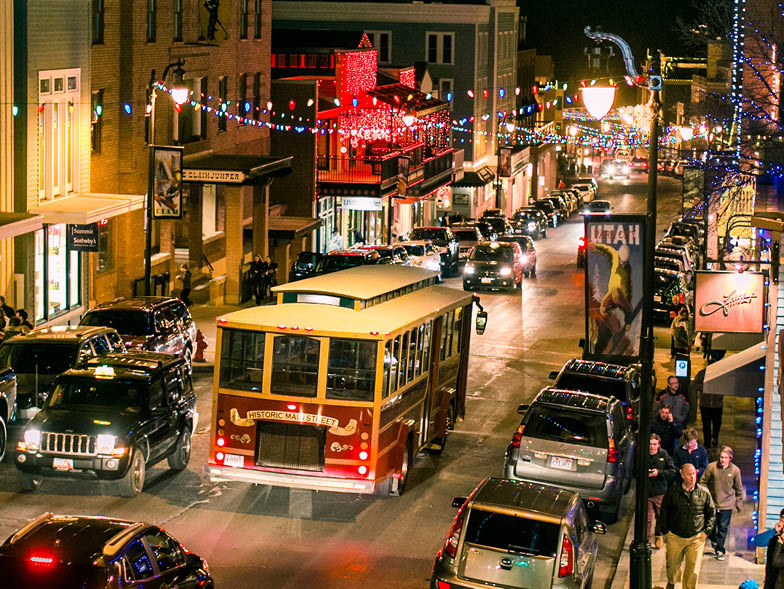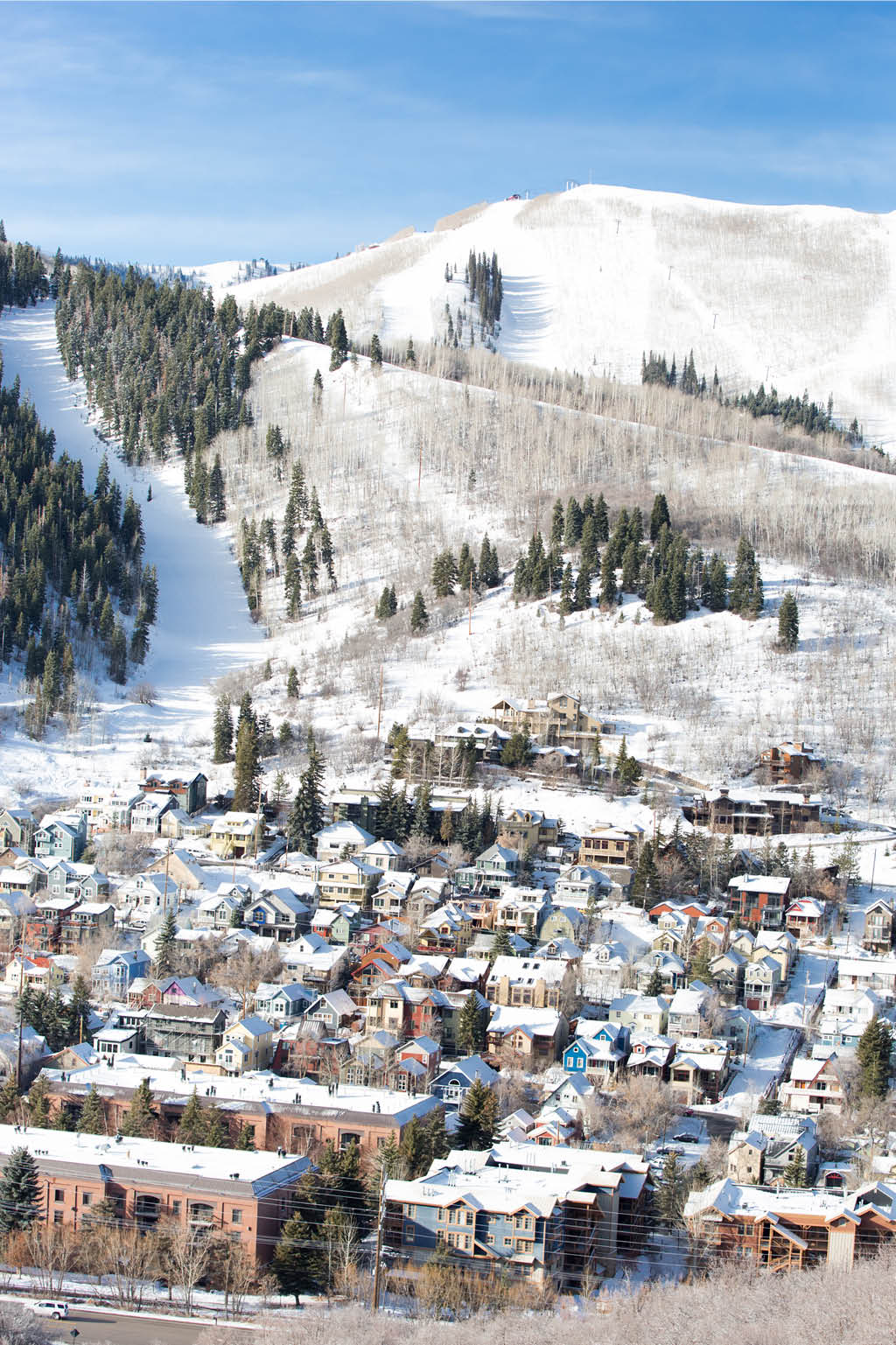Slopes, Sundance, and Scenic Views
Some cities are famous for their contributions to film, and others their influence on cuisine, music, or sports. However, it’s rare when a city can claim a distinguished level of renown in all these areas—and more.
Each November, as fresh snow begins to fall again on Park City, Utah’s mountain resorts, thousands of visitors are reminded just how inherently cool this winter sports mecca is. Skiing and snowboarding enthusiasts, both big and small, flood the town to cascade down some of the softest and lightest powder in the world, and if you ask well-traveled skiers or snowboarders their favorite place to visit in the United States, they are likely to say Park City. This is something the ski-in/ski-out town considers its crowning achievement.
But there is another side to Park City. It features an unassumingly hip art scene, a booming restaurant industry, and, not to be forgotten, the city’s largest event of the year—the Sundance Film Festival, which puts Park City and the state of Utah in an international spotlight each January.

A celebration of film
What originally began in Salt Lake City, Utah, as a way to highlight American-made films, Sundance has grown to include multiple festivals throughout the year and a host of new and innovative categories of cinema, like “Next,” which focuses on the importance of digital technology in film.
The founder of the festival, Sterling Van Wagenen, partnered with famed actor Robert Redford to host the first installment of the festival in August 1978. Just a few years later, the Sundance Institute was created; it now bolsters and educates independent filmmakers of all ages and genres from all over the world.
Sundance has launched the careers of some of the most prolific directors of our time, including Quentin Tarantino, Steven Soderbergh, and David O. Russell, as well as premiering transcendent independent works, likeThe Blair Witch Project, Little Miss Sunshine, and Whiplash.
Aside from pushing the boundaries of international independent film, the festival has become an enormous part of the identity of Park City. “There is something magical that happens in Park City when the films are premiering—directors and actors are enjoying a human-scale experience on historic Main Street and on the ski slopes that surround this charming mountain town,” says Dan Howard, director of communications for the Park City Visitors Bureau. “The excellence of the movie- making matches the quality of Park City’s culinary, skiing, and lodging offerings, and the accessibility of Park City (just thirty- five minutes from Salt Lake International Airport) makes it easy for visitors to enjoy the festival, whether they are coming from Los Angeles, New York, or abroad.”
The 2016 Sundance season drew more than 46,000 people to Park City and contributed nearly $144 million in economic activity, though Sundance is certainly not the only attraction driving in visitors.

An activity for every ability
Winter sports have always been the backbone of Park City, but it wasn’t until the 2002 Winter Olympic Games that the town gained international recognition for its incomparable mountains.
Park City Mountain offers the largest ski terrain of any ski mountain in the US, with over 7,000 acres, and Deer Valley is consistently rated at the highest levels of the industry for its snow-grooming quality, on-mountain dining experiences, and service levels …
Between the city’s two main resorts, Deer Valley and Park City Mountain, there are dozens of slopes to choose from for people of all skill levels. Deer Valley is also one ofthe only resorts in the country that is ski- only, as snowboarding is not permitted on the mountain. “Park City Mountain offers the largest ski terrain of any ski mountain in the US, with over 7,000 acres, and Deer Valley is consistently rated at the highest levels of the industry for its snow-grooming quality, on-mountain dining experiences, and service levels,” says Howard.
But what makes Park City’s offerings even more special is the National Ability Center, which ensures that all visitors to the town are able to enjoy every activity—from skiing to horseback riding and everything in between. of the most renowned in the US, and it welcomes more than 50,000 attendees to the city each summer.
NAC officially opened its doors in 1985 as a place for individuals of all ages and abilities to visit and participate in sports right alongside their family and friends. There is virtually no limitation on the range of adaptive programs offered, including those for people with orthopedic and spinal cord injuries, visual or hearing impairments, as well as developmental disorders like autism and Asperger’s syndrome.
Skiing, snowboarding, snowshoeing, and ice hockey programs are available during the winter months, but NAC also offers a variety of camps and programs throughout the year, including indoor rock climbing, horseback riding, cycling, swimming, and other water sports.
There are also a handful of special programs and activities geared toward active duty or veteran servicemen and servicewomen. NAC offers a seven-day retreat to promote health and wellness through recreation, as well as a number of single-day programs where service members of all branches are encouraged to participate with their families.

Off the slopes
It may seem like every inch of Park City is full of adventure, and there is certainly no shortage of it, but there are also plenty of ways for visitors looking to enjoy a little rest and relaxation to take a break from the slopes and opt into a more peaceful or low-key activity.
Park City has one of the largest collectives of artists in the western US, a fact displayed proudly in the city’s numerous art galleries and festivals, like Kimball Art Center, which began out of Park City resident Bill Kimball’s garage in 1976. Kimball has grown as an epicenter for art education and preservation, as well as host to the Kimball Arts Festival each August. At nearly fifty years old, the festival is one of the most renowned in the US, and it welcomes more than 50,000 attendees to the city each summer.
Among the city’s varied dining options are a number of eateries featuring alpine cuisine (think fondue and raclette cheese) and one restaurant that takes dining to new heights. Located on a peak above Park City Mountain Resort, the Viking Yurt is a can’t-miss experience for visitors—and it’s not only because of the food. A trip to the Nordic-style hideaway involves an 1,800-foot trek via sleigh to the top of the mountain, and be sure you leave plenty of time. It takes diners more than four hours to make their way through a six-course European meal. The evening begins with a traditional spiced, berry-flavored beverage served hot, followed by a lobster-and- shrimp bisque. A salad of pear, radish, and tomato follows, with a sorbet to cleanse the palate before the main event: braised short ribs, potatoes, and winter vegetables in a red wine lingonberry juice. The incredible meal wouldn’t be complete without a cheese and fruit plate, and lastly, chocolate brioche bread pudding with caramel sauce for dessert. The meal may seem a bit extreme, even for a real Viking, but between the view of the Utah night sky and complimentary music from the restaurant’s in-house concert pianist, there is no other dining experience quite like the Viking Yurt in Park City and, likely, the world.
A city like no other
Park City is certainly one of the most interesting places to visit in the US, not only for its world-class skiing, but also for the never-ending potential it provides to explore the incredible Utah wilderness while simultaneously absorbing some of the richest arts and entertainment scenes anywhere in the world. People may come to Park City for its matchless snowymountains, but they are quick to realize the possibilities off the mountains are just as abundant as the opportunities on the mountains.
For more info, visit visitparkcity.com.






















